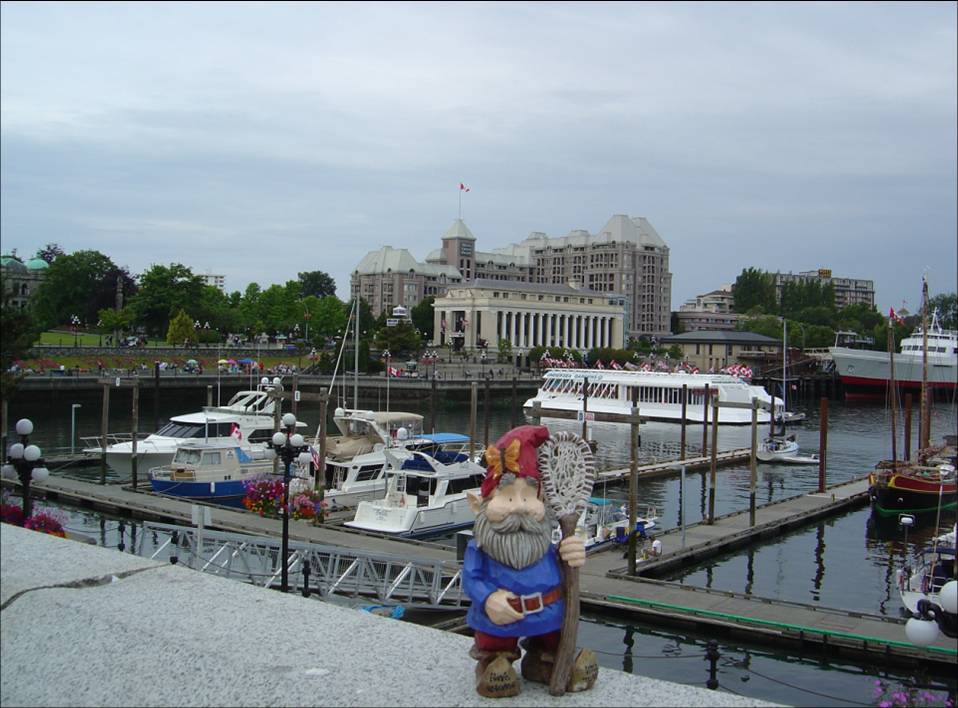|
Student Page A WebQuest for 5th Grade (geography) Designed by Susan Miguel-Acosta Where in the world is Jan? Jan (pronounced Yon) has been happily traveling the globe. He resides in Portland, OR, but he mysteriously disappears for weeks at a time, and reappears the same way, smiling coyly under his Japanese maple tree. From the pictures that were sent home, he has apparently been happily crossing continents. On his back it reads, "I've been to Belgium, Germany, Austria, and North Carolina (Duke University)." He recently disappeared again. However, a postcard and photos were sent from his captors saying he was braving the seas and mountainous icebergs through Antartica. Hopefully he'll be home soon! Click here to view other great places Jan has traveled. Introduction | Task | Process | Evaluation | Conclusion | Credits | Teacher Page
You have your passport tucked away in your luggage and it is sitting in the overhead compartment. It is filled with exotic and unusual stamps from around the world. Your digital camera is filled with incredible pictures of your journey. Your souvenirs have collected in your suitcase. However, to keep your experience alive for many years to come, you will investigate the many interesting things about your country, and create a memory page using your information for your class memory book entitled, "Globe Trotting." At the end of your investigation and production of your memory page, you will know more about your chosen state, country or province, and will be able to provide and share your information and creative memory page with your peers. You'll know:
1. Think about a country you've traveled to or would like to do a study on. Talk with your teacher if you are having difficulty deciding on a country, state or providence. 2. Next, you will do an investigation about this area's geographical features, as well as its cultural background. Click here for an investigation form that you will need, to learn more about your country. By answering all these questions, you will be able to use this information for your final project. 3. Look for online photography, or use personal photos that represent this area's landforms, people or culture. Use your art skills to create a personal touch in creating drawings that will represent your country's culture. 4. After you've collected all your needed information, maps, photos and drawings, you will type or legibly write all your information on clean colorful sheets of paper, which will be transfered onto your final board. 5. Be creative as possible. You should use various mediums such as markers, gel pens, colored pencils, paints, different textured or colored papers, yarn, feathers, beads, or anything that will give your reader a better understanding of your country. Remember, there is no wrong way of being artistic. 6. Create a colorful original title for your country. 7. Don't glue just yet! Arrange your collection on the sheet. Make sure everything you want to include fits on the board. Rearrange things if necessary so that the layout and design flows and reads well. 8. Okay, take a deep breath...and glue. 9. Congratulations! You've made it to your visiting country or state. 10. Turn in your memory page to your teacher. Your teacher is now ready to put all the pages of everyone's globe trotting experiences into the Globe Trotting Memory book.
Each student will be evaluated individually. Your evaluation will be based on your effort for both the investigation page, as well as the memory book page, creativity of the final page, conventions, and graphics that you use. The following rubrics is provided to help guide you throughout the assignment. The more you do to find out about your country, the more you'll have to share on your final memory book page. Be creative as you design your final page. Those that see your work will remember it for its genuine representation of your specific country.
Beginning 1 Developing 2 Accomplished 3 Exemplary 4 Score Memory page conventions: spelling, grammar, punctuation, & capitization Memory page: graphics/pictures Conclusion Your adventure is now complete. You've traveled back to a familiar place or have just learned about it for the very first time. You now know more about a place you've visited or would like to visit, and can now tell others about what you've learned. Do you think you'd like to visit this place? What interesting facts did you learn about your country? In recognition of the following websites that will assist in the invesitation:
The following people have helped make this website possible: Dr. Mark Bailey Jan Neirynck Yahong Zhang Ismael Acosta |
|||||||||||||||||||||||||||||||||||||||||||||||||||||||||||||||||
